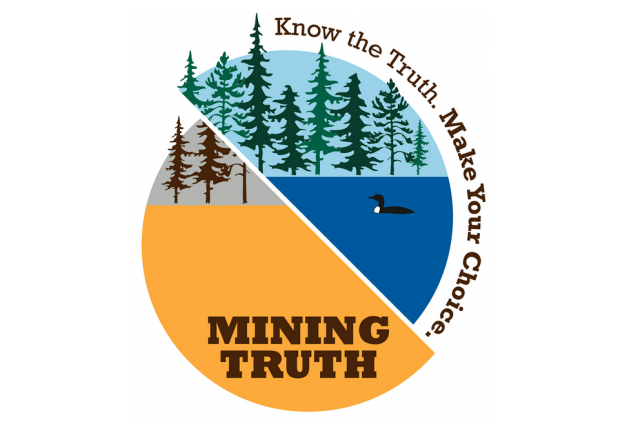
Mining Truth: About those jobs, jobs, jobs (Part 1)
Today, a coalition of environmental groups launched a campaign called Mining Truth to encourage Minnesotans to learn more about sulfide mining projects proposed in northeastern Minnesota. The environmental risks of mining copper, nickel and other metals from sulfide ores are well documented. There has never been a sulfide ore mine that operated and closed without environmental damage. But the battle over sulfide mining projects like those proposed by PolyMet and Twin Metals is almost always characterized as a battle between jobs and the environment, as if it is an accepted fact that opening a new mine will lead to economic prosperity. The truth is that there are substantial economic risks to opening Minnesota to a type of mining that we’ve never seen before, and the economic upside of opening a new mine isn’t as great as portrayed by the multinational mining companies that want to exploit Minnesota’s resources.
Overpromise and underdeliver
New proposals to open a mine always begin with fabulously rosy predictions about the number of jobs and economic development that would be created by opening a new mine. We’ve seen this repeatedly in Minnesota. For example, the PolyMet mine originally predicted 450 permanent jobs, 1,000 construction jobs and projected over 3,600 indirect and induced jobs when it was proposed in 1999. These figures have shrunk to 360 permanent jobs and 500 construction jobs after PolyMet eliminated plans to process the copper on site in February 2011. You might respond: “so what? These are still a bunch of jobs.” But even PolyMet states in their Draft Environmental Impact statement that only 25% of the jobs would go to local residents.
In the early stages of a mine proposal, the companies have every incentive to massively overclaim the number of jobs created by a project. Chilean mining company Antofagasta, which holds the option to own the Twin Metals project near Ely, has been playing fast and loose with their numbers. After meeting with Governor Tim Pawlenty in August 2010, Antofagasta Chairman John-Paul Luksic estimated that 2,000 to 2,500 workers would be hired as permanent operations staff for the project. This would make it one of the largest mines in the U.S. Subsequently, Twin Metals has pulled back their predictions to 1,000 to 1,500 jobs, but there is good reason to be skeptical of those numbers too. After all, we’ve seen it all before.
Iron Range Sen. Tom Bakk argued in 2009 that PolyMet would create a “total new business model in industrial production. We have an opportunity in Minnesota to actually mine the ore, and process it, turn it into pipe, turn it into wire, build the distribution center, and to send the finished product directly to the retailer. Nowhere in the world is that done.” When PolyMet announced they would send the concentrated ore elsewhere to be finished, this fantasy was extinguished. The visionary zeal of remaking the entire industrial production model was always a ruse.
We’ve also seen this with the grand promises of Essar Steel to build a fully integrated mining-to-steel plant near Nashwauk. This pattern repeats over and over again – portray your mining project as a transformative, value-added enterprise, get the local politicians on your side, press for subsidies and changes to environmental laws, then whittle away to get back to the most profitable and lowest labor cost configuration.
Mitt Romney’s ridiculous claim of creating jobs while at Bain Capital and the job creation claims of the mining industry share a similar deceit. Job creation has nothing to do with either of them. Job creation is an incidental effect of their business model. In fact, reducing the cost of labor is a key priority of both. They are not interested in creating jobs, they want to maximize profits.
And that’s where I’ll go in Part 2. If they open a PolyMet or Twin Metals mine, do you really think those will be good union jobs? I’ll look into the labor history of the copper mining industry, their labor practices worldwide, and what that means for Minnesota.
While we work on our commenting system, please go to our Facebook page and leave your comments on any story you read on LeftMN.
Follow me on Twitter @aaronklemz
Thanks for your feedback. If we like what you have to say, it may appear in a future post of reader reactions.


